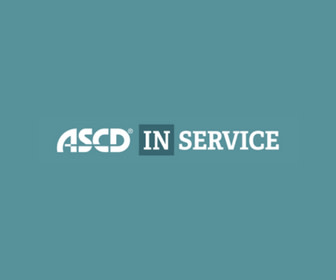STEM education—the focus on science, technology, engineering, and math—is rapidly becoming a national priority. Having helped start several successful STEM schools, I like the trend. But as I read the national conversation about STEM, I see educators falling into the same traps that keep education from truly becoming a 21st century enterprise.
One sign of the confusion is the newest acronym, STEAM, a push to include the arts in STEM programs. I like this trend, also. But it misses the point. Art and design thinking permeate the adult workspace these days; similarly, every class and program should be partly aimed at teaching a design and problem solving approach. It’s takes imaginative thinking to design a better widget; so does solving the problems of the Middle East.
The larger issue with STEAM, however, is that it reinforces an old notion: That STEM is a collection of math, engineering, and science classes that students ‘take.’ Line up the required classes in the proper sequence, graduate more students with additional math and science seat time, revive the science fair, schedule in an honors class in molecular genetics, and from that emerges a STEM program. Add an Art class down the hall in 5th period—and call it a STEAM program.
As I’ve written previously, most people don’t know the history of STEM education. The term was first coined in the 1890’s by the Committee of Ten at Harvard, charged with the task of reforming an agrarian school system. In their view, STEM described the attributes of a good industrial school system that would raise the standards of excellence for modern students.
Whether we choose STEM or STEAM, if we remain wedded to the view that school is simply a collection of classes and activities, I believe we’ll get the same result envisioned in 1890: Better education for an industrial world. STEM will take its place as a place marker for more math and engineering classes. But if we want to turn STEM into a transformative idea that can fuel fundamental change in schools, I think the following ideas are important:
Use PBL as the primary teaching method. Great STEM education arises out of the process of teaching and learning, not coverage of a specific curriculum. The most powerful STEM programs adopt an inquiry-based, student-centered, skill-driven approach to teaching and learning. Most use high quality project based learning to achieve their curriculum outcomes. The Common Core is taking all subjects in this direction; but I believe that STEM courses will be among the first beneficiaries.
Make STEM and innovation indistinguishable. Thinking in terms of STEAM isn’t necessary if a STEM program values and teaches innovation. I italicize that sentence because many values we hold in education never get explicitly taught. Use creativity rubrics with breakthrough categories, teach students to follow a design rubric, turn student teams into peer evaluators, allow time for prototyping, failure, reflection, and redesign—all these train students in innovative thinking and spur creativity. Of course, as the Committee of Ten recognized, this is good training for life as well.
Don’t confuse technology with STEM education. Hopefully, we have matured on this subject. In the early 2000’s, STEM programs started up with all the digital, gee-whiz tools available. Then programs failed. The reason: Technology is a tool for good education, but not a substitute for the personal skills necessary to be a good investigator or competent engineer, such as attention to detail, willingness to redraft, and perseverance in pursuit of perfection. At its heart, STEM is a way of systematically examining the world and identifying critical elements that lead to great change or improvement. This is a human factors subject, and good STEM programs start with building a culture of engagement, excellence, mastery, and effective collaboration prior to turning students loose on their iPads.
Attend to core content. Certain disciplines rely on argument and the exchange or development of deep ideas. STEM courses are not exempt, but they usually have more rigorous core content requirements and greater cognitive demand. Even a 9th grade Biology class, for example, introduces more new vocabulary than a Spanish 1 class. Good STEM programs blend inquiry with traditional teaching and core content methodology. They also sequence and scaffold the balance between student-centered inquiry and adult-facilitated instruction through the grade levels, expecting their 12th graders to be far more inquiry-driven and self-managing in terms of information than 9th graders. The goal is to have STEM students exit with an excellent command of the material, plus the skills to apply it, use it, and demonstrate it.
Trade in groups for teams and cohorts. Helping students move beyond FaceBook posts of their faves is essential to educating young people to work as effective collaborators. We can start by letting go of outdated concepts of group work and cooperative learning, and teaching the values and language of teams. Use contracts, peer collaboration rubrics, individual work ethic rubrics, and protocols to train and assess students on their ability to create a quality product through teamwork, as well as teach them about the accountability and commitment required for teams to operate at a high level. For STEM students, who may end up working in medical and engineering design teams, this training is vital. To give students practice in collaborative communication, as well as promote individual achievement within a team environment, have students form cohorts that help them track and refine their individual products during a project. Cohorts rely on careful analysis, precise feedback, and shared observation. This will make for better learners and products—and better scientists
Welcome the challenge of STEM. I have yet to see a good STEM program compatible with the existing rules and structures of traditional schooling. STEM teachers, if they’re doing their job, should bump up against grading systems, scheduling issues, teacher evaluations, curriculum requirements, collaboration time, graduation requirements, course sequencing mandates, pacing guides, and just about everything else associated with industrial methods. A good STEM system reflects the operating values of a tech-driven, design-oriented, can-do, entrepreneurial society. Schools can get there, and STEM can help.








